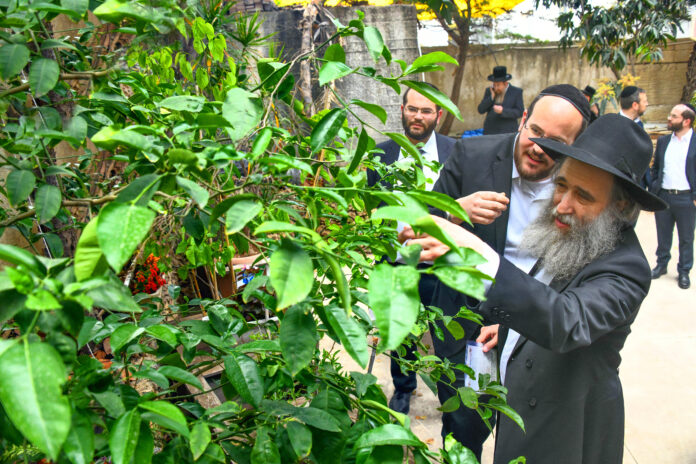Bnei Brak is a city filled with yeshivos, kollelim, talmidei chachamim, yeshivah bachurim, and batei midrash whose walls reverberate with the sounds of Torah. It is always inspiring to walk along Rechov Rabbi Abba Grosbard or Rechov Harav Sher, observing the thousands of yeshivaleit hurrying to seder to toil over the words of the Tanna’im and Amora’im.
Because there are so many gedolim and talmidei chachamim here, it is hard for anyone to stand out, with few exceptions. Rav Isomor Garbuz is one such exception. Rav Isomor, 63, is a son of Rav Avraham Noach Garbuz, who was among the first talmidim of Rav Berel Soloveitchik and the last talmidim of the Brisker Rav. Rav Avraham Noach serves as rosh yeshivah of Beis Yosef Novardok in Yerushalayim and gives chaburos to numerous groups of bachurim from various yeshivos.
Rav Isomor is a world-renowned gadol in his own right. He has authored sefarim on the entire Shas, and his writings on the most difficult sugyos in Shas, such as muktzah, chullin, niddah, and the entire mishnayos Taharos, are staples for anyone delving into these areas of Shas.
Late on a hot, humid Bnei Brak night, I am sweating as I make my way through a dark, dusty backyard in search of Rav Isomor’s building. I think back to my initial phone call to the rosh yeshivah, when I asked to schedule a meeting with him; all he wanted was to speak in learning. Rav Isomor shies away from the spotlight and rarely appears at public events. He almost never speaks at gatherings or functions, and he does not do any fundraising. For the rosh yeshivah, it is all about Torah, all the time. The same thing happened when I called back to confirm our meeting time.
I locate the building, and a young bachur shows me to Rav Isomor’s simple apartment. The front door opens into the living room, which doubles as the rosh yeshivah’s study. It contains a three-unit sefarim shrank, with a tiny breakfront section for a menorah and leichter; more sefarim shranks line the walls of the apartment. The rosh yeshivah is sitting at his dining-room table in front of a Gemara, speaking animatedly on the phone. He is tall, thin, and dressed in his typical understated fashion, without a jacket or tie.
While arguing his viewpoint on the sugya, Rav Isomor does not raise his voice, but his passion and delight in this terse exchange are evident. His eyes sparkle as he makes his case.
He holds his hand over the phone and apologizes profusely to me for the wait, although it has only been a few seconds. After hanging up, he greets me warmly and offers me something to eat and drink. Once again, his main interest lies in discussing which sugyos I am learning. After telling him that I am using his sefer Mishnas HaShabbos to learn the sugyos of muktzah, Rav Isomor excitedly begins peppering me with questions on the sugya.
“The sugyos of muktzah are among the most difficult,” he says. “Muktzah is spread out among numerous perakim in Shabbos as well as in Beitzah. Rabbi Akiva Eiger once said that it is the ‘greste sugya in Shas, the biggest sugya in Shas.’” The rosh yeshivah’s vast knowledge of the sugya is astounding, especially his detailed recall and understanding of the most complicated nuances—even though he is not currently learning this sugya. This clear and instant recall is one of Rav Isomor’s trademark characteristics.
To read more, subscribe to Ami





















